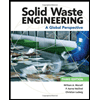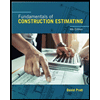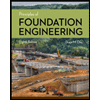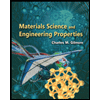
Find the average reaction force for the corresponding time of contact on cushion material.
Answer to Problem 39P
The average reaction force for the corresponding time of contact is calculated and tabulated in Table 1.
Explanation of Solution
Given data:
Weight of the laptop
Laptop is dropped at a height
Formula used:
Formula to determine the average force is,
Here,
m is the mass of the object.
Formula to determine the initial velocity of the laptop right before the floor is,
Here,
g is the acceleration due to gravity.
h is the height at which laptop is dropped.
Formula to determine the mass of the laptop is,
Here,
w is the weight.
g is the acceleration due to gravity.
Calculation:
The cushion material reduces the velocity of the laptop to a final velocity of zero. Therefore,
Substitute
Substitute 22 N for w and
Substitute 0 for
Substitute 0 for
Reduce the equation as follows,
Substitute 0 for
Substitute 0 for
Substitute 0 for
Thus, the average reaction force for the corresponding time of contact is calculated and tabulated in table 1.
Table 1
| Time of contact (Seconds) | The average reaction force (N) |
| 0.01 | 992N |
| 0.05 | 198N |
| 0.1 | 99.2 N |
| 1.0 | 9.92 N |
| 2.0 | 4.96 N |
Conclusion:
Hence, the average reaction force for the corresponding time of contact is calculated and tabulated.
Want to see more full solutions like this?
Chapter 10 Solutions
MindTap Engineering, 2 terms (12 months) Printed Access Card for Moaveni's Engineering Fundamentals, SI Edition, 5th
- How do different urban structures influence a city’s economic health over time? Provide an example of a structure that strengthened or weakened a city.arrow_forward*688* -2.625- —1.250- (d) 1. It is double dimensioned. 2. The extension lines are too long. 3. It has a dimension to a hidden line. 4. The dimensions are on the part.arrow_forwardConsider the soil profile below: 3m Vary 18.3kN/m Sand Groundwater table 6m -19.8kN/m² 4m Clay Sand Calculate the effective stress at the location of the red star (4m inside clay layer) if the saturated unit weight of the clay is 21.8 kN/m^3 Note: give your answer in units of kPa A sample of the clay layer in the previous problem is extracted from the location of the red star and tested in the lab. Vertical strain, &, (%) 1 50 40 10 100 1000 Effective consolidation stress, σ (kPa) Odometer testing yielded the following consolidation curve (red line): Calculate the over-consolidation ratio of the clay sample. Use two decimal places.arrow_forward
- Note: this question is part of soil mechanics Submit a neat, step-by-step handwritten solution that is fully worked out manually without any AI involvement. The solution must be expert-level, with all steps simplified and clearly shown. I will evaluate it based on precision and completeness, using the attached image as a reference. Ensure every part is thoroughly checked for accuracy before submission. Thank you.arrow_forwardNote: the two questions are connected as parts so please answer soil mechanics question as best you can !. Provide a clear, step-by-step simplified handwritten solution (with no extra explanations) that is entirely produced by hand without any AI help. I require an expert-level answer, and I will assess it based on the quality and accuracy of the work, referring to the attached image for additional guidance. Make sure every detail is carefully verified for correctness before you submit. Thanks!.arrow_forwardQ1) Compute the ultimate bearing capacity using the Vesic method 0.6 m 0.8 m 580 kN 200 kN y=17.29 kN/m³ Ysat 19.3 kN/m³ T 2.0 m 200 kN 150 kN 3.0 m GL ✓ WT 0.6 m c=26 kN/m² =26°arrow_forward
- Please do not use any AI tools to solve this question. I need a fully manual, step-by-step solution with clear explanations, as if it were done by a human tutor. No AI-generated responses, please.arrow_forwardwhat is admixture and what are the characteristics of it explain in detailarrow_forwardRobert Moses is one of the most influential—and controversial—figures in American urban planning history. His imprint on New York City and its surrounding regions remains evident in highways, parks, bridges, and housing policies. However, his approach to planning often excluded public input and disproportionately harmed communities of color and low-income populations. This assignment challenges you to reflect critically on Moses’ legacy and draw connections to contemporary urban planning challenges. Reflect on Power and Authority in Planning: How did Robert Moses’ accumulation and use of unelected power shape the urban landscape of New York? What lessons can modern planners learn about checks and balances in urban development? Community Impact Analysis: Identify and discuss at least one community or population that was negatively impacted by Moses' planning decisions. What were the long-term effects on that community? How might a more equitable planning process have changed the…arrow_forward
- After watching the video "The Rise and Fall of Robert Moses" (Vox), write a 1-page (approximately 500 words) double-spaced response that addresses the following: Reflect on Power and Authority in Planning: How did Robert Moses’ accumulation and use of unelected power shape the urban landscape of New York? What lessons can modern planners learn about checks and balances in urban development? Community Impact Analysis: Identify and discuss at least one community or population that was negatively impacted by Moses' planning decisions. What were the long-term effects on that community? How might a more equitable planning process have changed the outcome? Contemporary Relevance: Can you identify a current or recent urban planning decision (local, national, or international) that echoes the same issues of power, displacement, or inequity? Compare the two and discuss how modern planners might address these concerns differently.arrow_forwardPlease answer the question in the picture and make sure your work is correct please. Thank youarrow_forwardSolve the problem in the picture please only solve the part for the wall load at assuming rigid diaphragm please. Make sure you do the right work and show all of your work please. Thank you!arrow_forward
 Engineering Fundamentals: An Introduction to Engi...Civil EngineeringISBN:9781305084766Author:Saeed MoaveniPublisher:Cengage Learning
Engineering Fundamentals: An Introduction to Engi...Civil EngineeringISBN:9781305084766Author:Saeed MoaveniPublisher:Cengage Learning Solid Waste EngineeringCivil EngineeringISBN:9781305635203Author:Worrell, William A.Publisher:Cengage Learning,
Solid Waste EngineeringCivil EngineeringISBN:9781305635203Author:Worrell, William A.Publisher:Cengage Learning, Fundamentals Of Construction EstimatingCivil EngineeringISBN:9781337399395Author:Pratt, David J.Publisher:Cengage,
Fundamentals Of Construction EstimatingCivil EngineeringISBN:9781337399395Author:Pratt, David J.Publisher:Cengage, Principles of Foundation Engineering (MindTap Cou...Civil EngineeringISBN:9781305081550Author:Braja M. DasPublisher:Cengage Learning
Principles of Foundation Engineering (MindTap Cou...Civil EngineeringISBN:9781305081550Author:Braja M. DasPublisher:Cengage Learning Traffic and Highway EngineeringCivil EngineeringISBN:9781305156241Author:Garber, Nicholas J.Publisher:Cengage Learning
Traffic and Highway EngineeringCivil EngineeringISBN:9781305156241Author:Garber, Nicholas J.Publisher:Cengage Learning Materials Science And Engineering PropertiesCivil EngineeringISBN:9781111988609Author:Charles GilmorePublisher:Cengage Learning
Materials Science And Engineering PropertiesCivil EngineeringISBN:9781111988609Author:Charles GilmorePublisher:Cengage Learning





